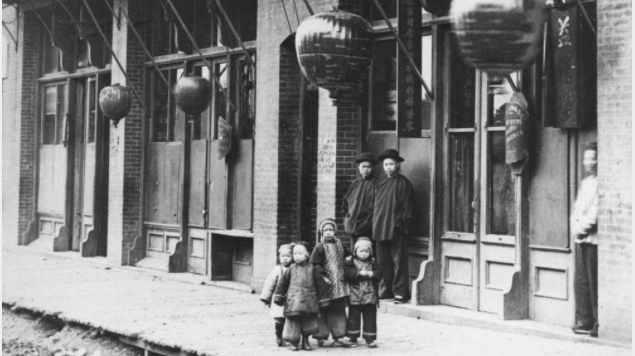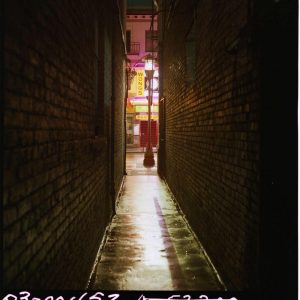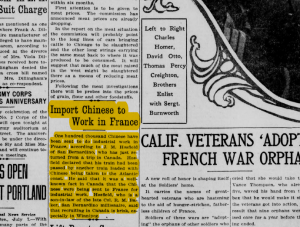While this falls outside of the scope of this project, local and international press coverage and the international context in China during this period are important aspects of understanding the topic as a whole. Because so many involved in the Chinese Canadian community during the war had loyalties and connections that spanned the globe, it is important to acknowledge these influences on Victoria’s Chinatown and the role of the Chinese Labour Corps.
Local Coverage
Due to the nature of the Chinese Labour Corps’ role in the war, secrecy was of the utmost importance so that enemy intelligence would not learn of it and hinder British operations. As such, while being held at William Head Quarantine Station, steps were taken to ensure nearby Victoria would not learn of the Chinese presence.
Thanks to the War Measures Act introduced by the federal government in 1914, and the Censorship Office that developed under it, Victoria newspapers could not report on the goings-on at William Head.[1] However, it would be impossible to hide the presence of thousands of Chinese men camped out a scant 14km from the province’s capital and mentions of the CLC did make into local news.
One particular man, most notable for his staggering height of over 6 feet, made a break from William Head for the lights, music, and opium dens of Fan Tan Alley. He was easily found by Victoria constables and escorted back to the Station and placed on the next ship for England. A small note of this adventure was made in Daily Colonist.[2]
It would not be until well after the war had ended that the CLC would reappear in Victoria newspapers. In a March edition of the Daily Province in 1920 a small article noted the departure of the last of the CLC from William Head, bound for Mongolia. With his departure the “Coolie Camp” closed for good, but a few Chinese would remain in the area on D’Arcy Island’s leper lazaretto.[3]
International Coverage
Despite the very best efforts of the Canadian Censorship Office, they could not extend their reach south of the border into the United States. While governments of both countries would later come to an agreement diplomatically in regards to media censorship as it applied to the CLC, it still left a sizable gap in their defenses.
News of the Chinese presence in Canada was picked up most notably by two American publications, the Seattle Sunday Times and the San Francisco Examiner.[4] The Seattle-based paper merely notes the presence of a multitude of ships arriving from Asia up the coast, but the San Francisco paper caused a little more harm by drawing attention to a train full of Chinese men crossing the Canadian countryside.
Thankfully for the British, the Canadian government was able to stifle almost all media knowledge of the CLC’s presence and movement around the country until well after the war had ended. The media gag remained in place regarding the Chinese in the immediate post-war years to prevent local Chinese Canadian communities from “adopting” those destined to return to China.
China During World War I
China’s World War I experience was vastly different from the experiences of its European allies. While the history is much more complicated than there is time and room here to explain, in October 1911, revolution broke out in China against the unpopular Qing dynasty which had been unable to properly modernize China and establish its place in the new, global era.

Record booklets of donations made by Chinese Canadians in Victoria to the revolutionary cause. Source: University of Victoria Special Collections and University Archives, Chinese Consolidated Benevolent Association, CA UVICARCH AR030, 2011-004 01/H/02-03, 1.17 Receipts for donation to the Republic of China, 1912 – 5 items.
Because of the revolution, two new government systems were formed – Sun Yat-Sen was elected as the first Provisional President of the Republic of China in the south, and Yuan Shikai would come to control the northern government based out of Beijing.
Though he did not lead the uprisings, Sun Yat-Sen was a long-time revolutionary leader that had been attempting to politically reform China for almost two decades. Leading up to the revolution, the Qing dynasty and the various revolutionary factions had actively competed for the support of the overseas Chinese community, including that in Victoria. A strong China could negotiate an end to the head tax and other discriminatory practices imposed by foreign governments.[5] As part of his travels prior to the revolution, Sun Yat-Sen visited Victoria in 1897 and 1911 to raise support for his political organizations. After the revolution, his revolutionary group turned into the national party, Kuomintang, which had branches in Victoria.
Even after the revolution ended in 1912, there was ongoing political unrest in China within and between the two government systems. It was not until 1917 that the northern government formally entered World War I on the sides of the Allies. Instead of sending soldiers, the northern Chinese government sent thousands of labourers to France via William Head near Victoria.
Footnotes
[1] Xu Guoqi, Strangers on the Western Front: Chinese Workers in the Great War (Cambridge: Harvard University Press, 2011), p.64.
[2] Peter Johnson, Quarantined: Life and Death at William Head Station, 1872-1959 (Victoria: Heritage House Publishing Company, 2013), p.151.
[3] Johnson, Quarantined, p.156-157.
[4] Guoqi, Strangers, p.66.
[5] Edgar Wickberg, ed., From China to Canada: A History of the Chinese Communities in Canada (Toronto: McClelland and Stewart, 1982), 102.
Authors: Kate Riordon & Kate Siemens.


